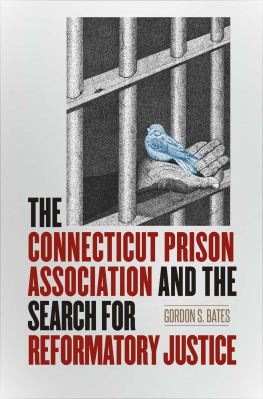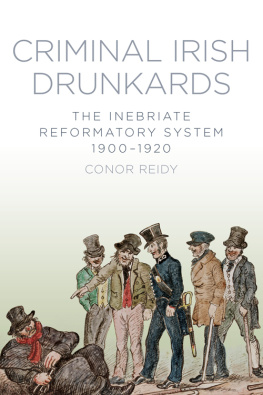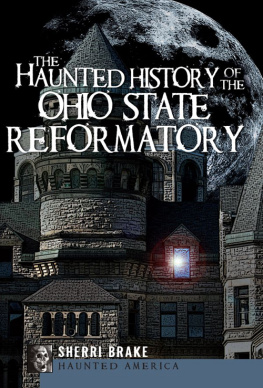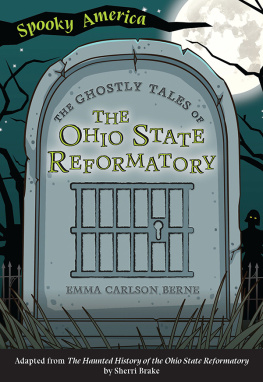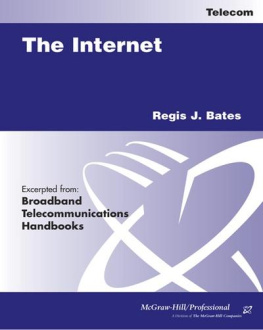Gordon S. Bates - The Connecticut Prison Association and the Search for Reformatory Justice
Here you can read online Gordon S. Bates - The Connecticut Prison Association and the Search for Reformatory Justice full text of the book (entire story) in english for free. Download pdf and epub, get meaning, cover and reviews about this ebook. year: 2016, publisher: Wesleyan University Press, genre: Politics. Description of the work, (preface) as well as reviews are available. Best literature library LitArk.com created for fans of good reading and offers a wide selection of genres:
Romance novel
Science fiction
Adventure
Detective
Science
History
Home and family
Prose
Art
Politics
Computer
Non-fiction
Religion
Business
Children
Humor
Choose a favorite category and find really read worthwhile books. Enjoy immersion in the world of imagination, feel the emotions of the characters or learn something new for yourself, make an fascinating discovery.
- Book:The Connecticut Prison Association and the Search for Reformatory Justice
- Author:
- Publisher:Wesleyan University Press
- Genre:
- Year:2016
- Rating:5 / 5
- Favourites:Add to favourites
- Your mark:
- 100
- 1
- 2
- 3
- 4
- 5
The Connecticut Prison Association and the Search for Reformatory Justice: summary, description and annotation
We offer to read an annotation, description, summary or preface (depends on what the author of the book "The Connecticut Prison Association and the Search for Reformatory Justice" wrote himself). If you haven't found the necessary information about the book — write in the comments, we will try to find it.
Gordon S. Bates: author's other books
Who wrote The Connecticut Prison Association and the Search for Reformatory Justice? Find out the surname, the name of the author of the book and a list of all author's works by series.
The Connecticut Prison Association and the Search for Reformatory Justice — read online for free the complete book (whole text) full work
Below is the text of the book, divided by pages. System saving the place of the last page read, allows you to conveniently read the book "The Connecticut Prison Association and the Search for Reformatory Justice" online for free, without having to search again every time where you left off. Put a bookmark, and you can go to the page where you finished reading at any time.
Font size:
Interval:
Bookmark:

THE CONNECTICUT PRISON ASSOCIATION AND THE SEARCH FOR REFORMATORY JUSTICE
A DRIFTLESS CONNECTICUT SERIES BOOK
This book is a 2015 selection in the Driftless Connecticut Series, for an outstanding book in any field on a Connecticut topic or written by a Connecticut author.
THE CONNECTICUT PRISON ASSOCIATION AND THE SEARCH FOR REFORMATORY JUSTICE
Gordon S. Bates
WESLEYAN UNIVERSITY PRESS
Middletown, Connecticut
Wesleyan University Press
Middletown CT 06459
www.wesleyan.edu/wespress
2017 Gordon S. Bates
All rights reserved
Manufactured in the United States of America
Designed by Richard Hendel
Typeset in Utopia and Aller types by
Tseng Information Systems, Inc.
The Driftless Connecticut Series is funded by the BEATRICE FOX AUERBACH FOUNDATION FUND at the Hartford Foundation for Public Giving.
Hardcover ISBN: 978-0-8195-7676-7
Ebook ISBN: 978-0-8195-7677-4
Library of Congress Cataloging-in-Publication Data
Names: Bates, Gordon S., author.
Title: The Connecticut Prison Association and the search for reformatory justice / Gordon S. Bates.
Description: Middletown, Connecticut: Wesleyan University Press, [2017] | Series: Driftless Connecticut series | Includes bibliographical references and index.
Identifiers: LCCN 2016023302 (print) | LCCN 2016036371 (ebook) | ISBN 9780819576767 (cloth: alk. paper) | ISBN 9780819576774 (ebook)
Subjects: LCSH: PrisonsConnecticutHistory. | Prison administrationConnecticutHistory. | CorrectionsConnecticutHistory. | Criminal justice, Administration ofConnecticutHistory. | Connecticut Prison Association.
Classification: LCC HV9475.C8 B38 2017 (print) | LCC HV9475.C8 (ebook) | DDC 365/.974606dc23
LC record available at https://lccn.loc.gov/2016023302
5 4 3 2 1
Cover illustration: Richard Celso, A Matter of Trust, 2011. Courtesy of the Community Partners in Action Program.
CONTENTS
Appendixes for this book are available in its ebook edition and online at http://wesleyan.edu/wespress/e-books/materials/CPA.html.
Appendix 1: Community Partners in Action Presidents and Chairpersons
Appendix 2: Community Partners in Action Agents and Executive Directors
Appendix 3: Connecticut Department of Correction Commissioners
Appendix 4: Important Dates in CPA History
Appendix 5: The Ideal of True Prison System for a State
Appendix 6: Declaration of Principles Adopted and Promulgated by the 1870 Congress of the National Prison Association
THE CONNECTICUT PRISON ASSOCIATION AND THE SEARCH FOR REFORMATORY JUSTICE
INTRODUCTION Two Faces of Justice
Good history begins with a good story.
James West Davidson and Mark Hamilton Lytle, After the Fact
In 1875 Connecticut had one prison (built in 1829), ten county jails (some of which dated back more than a century), and a board of pardons under the governors direction. The states county courts had been abolished in 1855 in favor of stronger superior courts. Court business increased after the end of the Civil War, and courts of common pleas were established to deal with less serious legal issues. Not all Connecticut towns had a full complement of courts; juvenile cases were still handled in adult courtrooms. As of 1875 organized police departments had been around only in Americas major cities, including Hartford and New Haven, for less than fifteen years.
The states criminal justice system was fragmented, generally unprofessional and unregulated. In 1875 the newly formed Prisoners Friend Corporation was the only organization in the state, public or private, whose sole focus was to help form and reform the growing field of criminal justice. The founders changed the name to Connecticut Prison Association the following year. Over the next thirteen decades CPA was either a primary advocate or an active participant in every major criminal justice policy change.
My experience with the Connecticut Prison Association spans from 1964 to 1997. As a CPA prison volunteer I visited inmates in the state prison for five years and sponsored two offenders. I was then enlisted to direct the agencys volunteer programs and did so for eleven years. In 1980 the CPA Board selected me to be the executive director, a post I held for seventeen years. Participating in the work of a private, secular agency exposed me on a regular basis to the realities of crime and punishment for probationers, inmates, and parolees and for all who work in the system. The benefits of public and private partnerships were evident soon after I joined the CPA staff. From the time I first entered the Somers Correctional Institution, a maximum-security prison in 1964, I became fascinated with the role a voluntary agency could play in a public arena. Much of the creative energy expended in the evolution of criminal justice in Connecticut and in the United States is due to the work done by agencies like CPA.
A voluntary association that has lasted for over one 140 years as of 2015, in a field as complex as criminal justice, deserves recognition and appreciation. Nonetheless, hagiography was never my intent. I was more interested in questions about what kinds of people were motivated to form CPA. What kept it moving forward? Who paid for its work? I was curious about how a private-sector agency had operated in conjunction with a public system notorious for excluding rather than including outsiders, especially those perceived as amateur meddlers or do-gooders. And I wanted to find out, what has been accomplished by the agency in each successive era? Where and why did CPA fail? How has the CPAs original agenda changed over the years? And how has the CPAs approach to criminal justice issues fit into, or conflicted with, the approach of criminal justice professionals and others at the state and national level?
Connecticut can boast of many firsts, but in the field of criminal justice Connecticut was never viewed as a pacesetter. The land of steady habits has been, usually, a minor footnote for national historians supplementing the systems created by Massachusetts, New York, Minnesota, Pennsylvania, Florida, California, and other large states. Partial descriptions of Connecticuts approach to law enforcement, as well as brief histories of its courts and correctional components, are available on their respective websites. But if we look at CPAs existing annual reports from 1880 on; newspaper articles from the same period; references to the CPA in books or articles by professional historians; references to Connecticuts criminal justice system, including adult and juvenile courts and such services as probation, parole, and alternatives to incarceration; interviews with criminal justice professionals in Connecticuts system; and extensive reading in the events, issues, and lives around which the story of the United States has been told and retold, we uncover a more comprehensive description of Connecticuts criminal justice evolution since colonial times.
Although the Connecticut Prison Association is not a huge agency, and Connecticut is not a large state, both recapitulate in their histories the fundamental choices that must be made to construct, manage, or reform the components of a criminal justice system. It is the accumulation of those choices that determines what laws are passed, how they are interpreted, and whether they have been applied fairly and effectively to offenders, to victims of crime, and ultimately to the benefit or detriment of society. In a metaphoric sense the history of CPA reveals the perennial struggle to determine what face of justice has been dominant in Connecticut in each successive era since 1875a lens through which to trace the development of Connecticuts correctional facilities, its adult and juvenile courts, and such services as probation, parole, and alternatives to incarceration.
Next pageFont size:
Interval:
Bookmark:
Similar books «The Connecticut Prison Association and the Search for Reformatory Justice»
Look at similar books to The Connecticut Prison Association and the Search for Reformatory Justice. We have selected literature similar in name and meaning in the hope of providing readers with more options to find new, interesting, not yet read works.
Discussion, reviews of the book The Connecticut Prison Association and the Search for Reformatory Justice and just readers' own opinions. Leave your comments, write what you think about the work, its meaning or the main characters. Specify what exactly you liked and what you didn't like, and why you think so.

